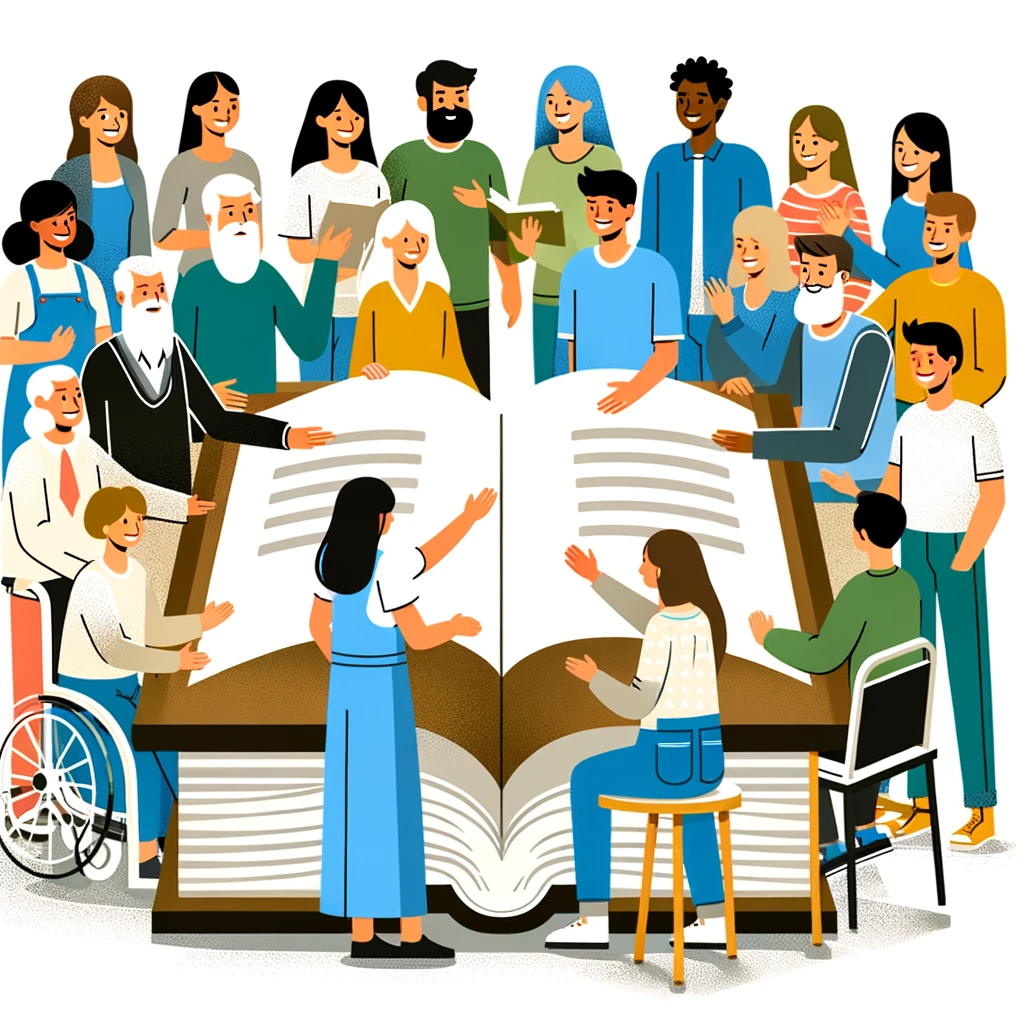Welcome to our quick guide on making your writing clear and easy for everyone to read! Here, we’ll show you simple strategies and AI tools to make your content accessible and improve your website’s visibility. Ready to make your writing more engaging and inclusive?
Reach all your readers
Writing content that is easy to read and understand is important. It helps more people access your information. It also improves SEO. This guide will show you how to use ‘Simple as This’ and Easy Read tips to make your writing clearer. You will also learn how AI can help simplify your content.
Why Readability Matters
Readability means how easy it is to read and understand content. It is important for:
- People with cognitive disabilities
- People with low literacy levels
- Older readers
Making content readable shows you care about including everyone. It also helps with SEO by:
- Increasing time spent on your site – Google will show your work to more people
- Reducing bounce rates – people stay on your page and don’t click away
- Reaching a wider audience – more people can understand your writing
‘Simple as This’ Principles
I was sent a “Simple as This – DIGITAL” pdf created by Patricia Almeida and a team of collaborators. It guides how to write and design content in an easy-to-understand language.
To improve the readability of your articles, the following key principles can be taken from the document:
- Use Short, Simple Sentences: “Write as you speak” and “One idea per phrase”.
- Direct Word Order: Use a straightforward structure, such as “subject + verb + complements”.
- Use Everyday Words: Choose words that are common and easy to understand.
- Explain Complex Words: If a complex word is necessary, highlight it and explain its meaning.
- Avoid Passive Voice: Use active voice to make sentences clearer.
- Write Dates in Full: Instead of “07/22/2023”, write “22nd July 2023”.
- Use Appropriate Language for Your Audience: Avoid childish language if not talking to children.
- Use Direct, Clear Sentences: This helps avoid complicated words and symbols.
- Use Sans Serif Fonts for Readability: Fonts like Arial and Helvetica are easier to read.
- Use Colours That Contrast: Ensure text is easy to read against the background.
- Use Simple and Self-Explanatory Images: Choose images that relate to the content.
- Validate with Your Audience: Test the content with people who represent your target audience.
Easy Read Principles
- Easy Read goes further than Simple as This.
- It uses visuals and audio to support the text
- This helps people with significant reading difficulties
- EasyRead uses:
- Simple, active sentences
- Symbols and images that relate to the content
- Audio descriptions for multimedia content
Success Stories: Making Things Easier to Understand
The DWP Story
The UK’s Department for Work and Pensions (DWP) wanted everyone to understand their information, even people who find reading hard. They decided to use Easy Read methods for documents and letters.
Here’s what they did: –
They Saw the Need: The DWP knew they had to make their information easier for everyone. This was especially important for people who have difficulty reading or learning.
They Made Changes: They started using simple words, short sentences, and pictures. This made their information easier to understand. –
They Worked Together: The DWP asked people who have a hard time reading to help them make their information better. This made sure the information was just right for them.
People Liked It: People who read the new, easier information found it simpler to understand. This shows that making things easier to read really works.
It Helped More People: Not just people with learning difficulties, but also those who are not good at reading, people who are learning English, and people who just like information to be clear and simple, found this helpful.
They Kept Going: The DWP decided to keep making their information easy to read. They want to make sure everyone can understand their information.
This section was rewritten with an AI prompt to simplify the text.
How AI Can Help Simplify Content

- AI tools can analyse readability and suggest improvements
- They can rewrite complex sentences using simpler language
- AI can identify difficult words and suggest alternatives
- It can check if sentences are clear and focused on one idea
- Some AI can convert text to EasyRead formats with images
Tips for Using AI to Simplify Content
- Test the simplified content with your target audience
- Give the AI tool context about your audience and goals
- Review AI suggestions and refine them to ensure accuracy
- Make sure the simplified content still matches your style and voice
AI Prompt for using “Simple As This” guidelines
“You are a writer that creates easy to read documents, rewrite the attached document as follows:
Use EasyRead language
Write short, simple sentences.
Use everyday words.
Explain difficult words.
Use direct word order: subject + verb + complements.
Avoid passive voice.
Avoid impersonal sentences.
Avoid terms like although, since, as long as, however.
Avoid acronyms and abbreviations.
Avoid foreign words.
Avoid technical words and figures of speech.”
AI Prompt for “EasyRead” conversion
“Convert the following text to EasyRead format. The target audience is adults with learning disabilities, with a reading age of 9 to 12 years. Use a simple, conversational tone, and everyday language. Break down complex sentences into shorter ones, no more than 15 words each. Replace technical terms with common words and provide examples to illustrate difficult concepts. Organize the content with clear headings and bullet points, and suggest places where supportive images can be added. Ensure the text is screen reader friendly and format it for easy review. Include clear calls to action or summaries at the end of sections.”
Case Study using the Prompt
Creating an Easy Read text for ‘The Social Model of Disability’
I used the “Simple As This” prompt to rewrite The Social Model of Disability page from Inclusion London.
I chose this text example because the social model of disability tells us that what really makes things hard for disabled people are the barriers in society, not their disabilities.
People who make content can use this idea. They can make sure information is easy to understand. This helps make the online world welcoming for all.
The AI model was chatgpt via a perplexity pro account where you can choose different AI models.
I also created a named “Collection” so I can use this prompt again. If you use chatgpt I created an “Easy Read Rewriter” gpt here.
Here is the output:
“The Social Model of Disability is a way of looking at the world. It was made by people with disabilities. It says that people are not disabled because of their bodies. They are disabled because the world has barriers. These barriers can be things like stairs with no ramps or information that is not easy to read.
Long ago, people thought that if someone could not do something, it was because of their body. They tried to fix the person’s body or gave them special places to go, away from everyone else. This is called the Medical Model of Disability.
But the Social Model says no. It says the problem is not the person. The problem is the world around them. For example, if a person in a wheelchair cannot get into a building because there are only stairs, the problem is the stairs, not the wheelchair.
The Social Model helps us see what needs to change in the world. It tells us to make things like buildings, buses, and information easy for everyone to use. This helps not just people with disabilities, but everyone.
People with disabilities started to ask for their rights in the 1960s and 1970s. They wanted to live like everyone else, with choices and control over their lives. They made groups to talk about these ideas and to ask for changes.
The Social Model also talks about language. The words we use are important. Instead of saying “handicapped” or “wheelchair bound,” we say “person with a disability” or “wheelchair user.” This shows that the person is not the problem. The problem is the barriers they face.
Some people have tried to change the Social Model. They say that the person with the disability should change, not the world. However many people with disabilities do not agree with this. They say the world should change to include everyone.
The Social Model is not perfect. It does not always talk about all types of disabilities. But it is a good start. It helps us work together to make a world that is good for everyone.”
This output hasn’t been edited. All AI content should be checked and edited before publishing.
Table comparing the AI version and the Original version
| Metric | Easy Read Version | Original Version |
|---|---|---|
| Flesch-Kincaid Grade Level | 6.4 | 15.6 |
| Flesch Reading Ease Score | 68.9 | 23.4 |
| Reading Level | 8th & 9th grade (Plain English) | College graduate (Very difficult to read) |
| Average Words per Sentence | 10.9 | 22.4 |
| Average Syllables per Word | 1.5 | 1.9 |
| Sentences | 32 | 109 |
| Words | 348 | 2438 |
I used this free online readability calculator to score. Inclusion London created their own easy read factsheet here.
Other online tools for improving readability
- Hemingway Editor: This tool highlights sentences that are hard to read. It also points out when you use the passive voice. It gives you ideas for how to make your writing clearer.
- Readable: You can use it to scan your website, analyze your text, or even add readability to your own tools with an API.
- WebFX Readability Tool: This free online tool calculates readability scores. It gives your writing a grade level score, such as the Flesch-Kincaid grade level and the Gunning Fog index, and suggests improvements.
- Yoast SEO Plugin for WordPress: If you use WordPress for your website, this plugin is super helpful. It includes a readability checker. It looks at your writing and gives you tips based on different readability scores.
- Datayze Readability Analyzer: This tool looks at your writing and gives you scores from multiple readability formulas. It also gives you detailed info on your words, sentences, and vocabulary.
- Readable.com’s AI-powered Readability Scorer: This AI tool learns as you use it. It gives you ideas for improving your readability.
Make it easy to read! A win-win for all
- Making content readable helps everyone, including disabled people
- It also improves SEO by increasing engagement
- Simple As This and EasyRead principles make writing clearer
- AI can assist in simplifying content, but human review is still needed
- Accessible content benefits individuals and society as a whole
So, what do we do next?
- Try using Simple As This and Easy Read ideas in your own writing
- Explore AI tools to help simplify and improve your content
- Commit to creating accessible, inclusive content
- Ask people to read and test your writing is easy to read
Small changes in your writing can have a big impact on your readers
Finally –
- We all need to encourage the training of AI Models on Easy Read materials and have an option to produce output that is easier to understand for all
This article was rewritten with the easy read prompt and then edited.
Further Reading:
- Readability Guidelines: A collaborative, evidence-based style guide for improving content readability, created by the global content community.
- A Guide to Making Easy Read Information: Comprehensive guide from People First New Zealand on writing Easy Read content, including principles, examples, and a checklist.
- One Idea Per Line: A Guide to Making Easy Read Resources: Detailed guide from the Autistic Self Advocacy Network on creating Easy Read resources, covering formatting, translation, and working with self-advocates.
- How to write Easy Read content: Practical tips from Accessibility Made Easy on writing Easy Read, including language, structure, images, and user testing.
- How DWP used the easy read format to make its content more accessible: Case study showing how a UK government department implemented Easy Read standards to improve the accessibility of its content.
- How AI can help Disabled People – Our previous in-depth look at how AI can improve the world for disabled people.
About the Author: Duncan Edwards
Relevant Experience: I am skilled in organising inclusive events where communication is key, aiming to create spaces everyone can enjoy.
This mirrors my professional experiences in making information accessible and understandable.
I worked with the Disability Horizons team collaborating closely with a community where clear, straightforward communication is essential.
My ventures in managing online platforms for disabled entrepreneurs and my seven years as a welfare benefits and housing advisor navigating welfare benefits honed my ability to break down complex information into easy-to-understand language.
I understand the importance of simplicity in communication is crucial in today’s digital world.

